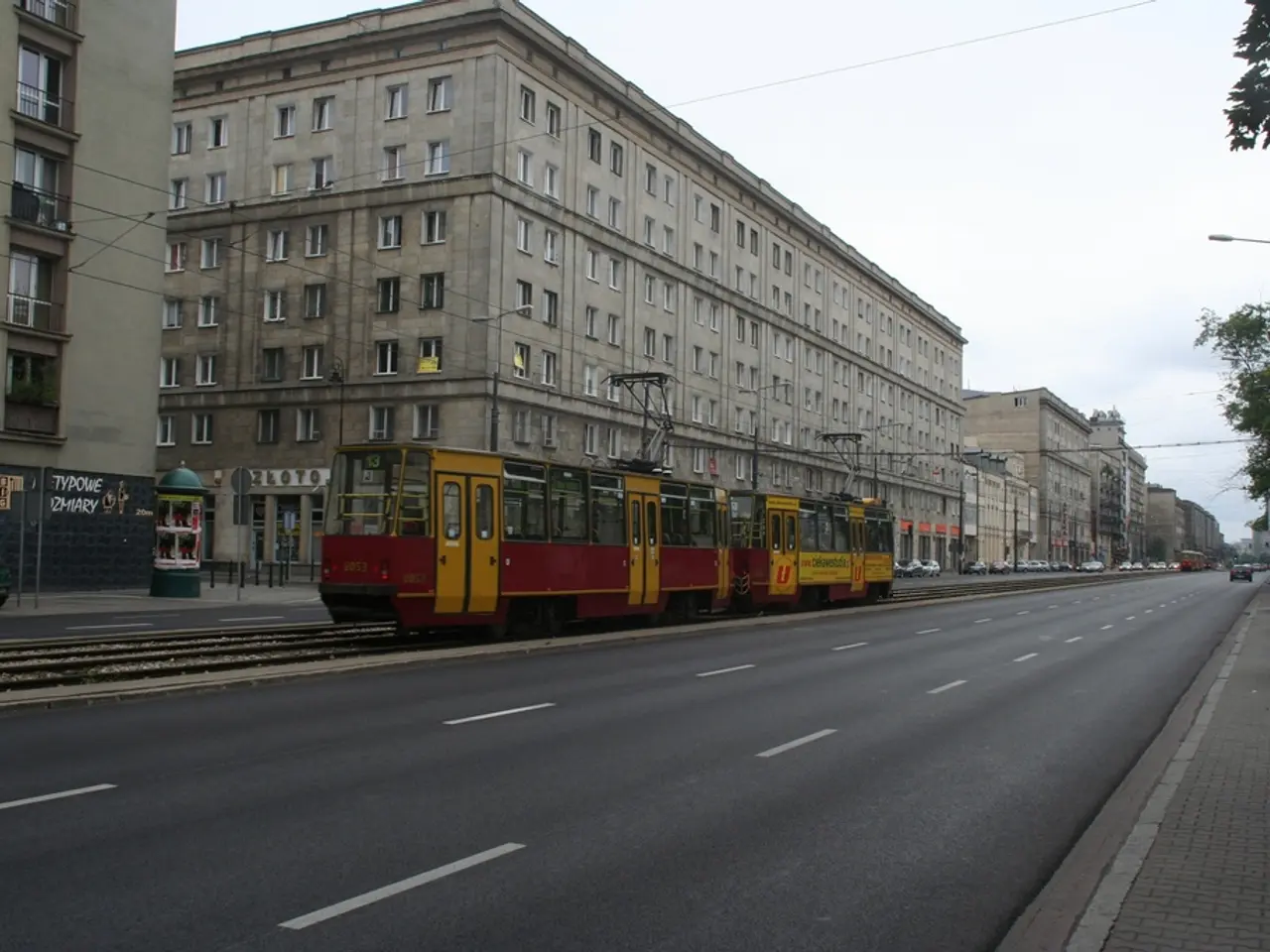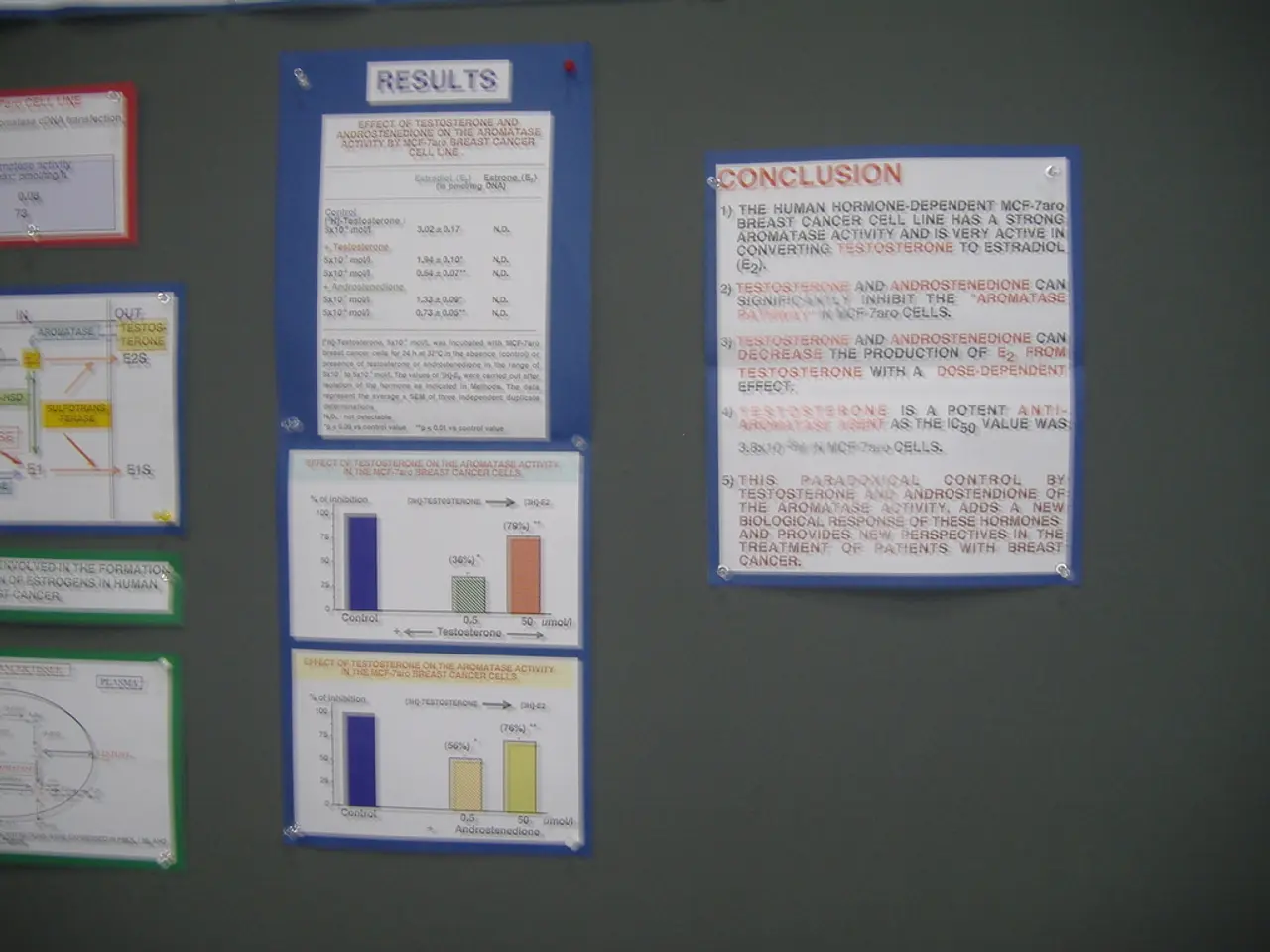Industrial Sectors Show Signs of Positivity Across the Globe
In the past quarter, U.S. industrial sector executives have reported a significant increase in input costs due to tariffs, particularly affecting manufacturing, which is heavily reliant on imported intermediate goods [1]. These tariffs have undermined the competitiveness of U.S. manufacturers, even in politically sensitive sectors like vehicle production.
Economic analyses corroborate these statements, revealing that manufacturing industries are the most exposed to tariffs. About 19 of the top 25 U.S. subsectors affected are in manufacturing. Although some manufacturing output gains (approximately 2.1–2.6% increase in the long run) are projected, they are outweighed by broader negative impacts such as reduced overall GDP growth, job losses, and decreased output in other sectors like construction and agriculture [2][3].
The impact on employment is nuanced. While tariff increases lead to employment declines in the broader economy due to reduced spending power and efficiency losses from more expensive foreign inputs, they do cause some substitution toward domestic manufacturing production, temporarily raising employment in the sector [4]. This dynamic has been confirmed by executives who note cost pressures but also some attempts to replace imports with domestic inputs where possible.
Recent tariff policy escalations, such as increased rates for India and planned tariffs on the EU and Mexico from August 2025, suggest ongoing pressure on the industrial sector’s costs and supply chains, intensifying concerns raised by industry leaders [2][5].
Meanwhile, there are glimmers of hope in certain sectors. Executives at Nucor expect second-half demand to be stronger than last year, with orders for data center beams up significantly [6]. The CFO of steel manufacturer Nucor Corp., Steve Laxton, reports robust quoting activity and increased business confidence among customers in the construction and infrastructure markets. Similarly, Olympic Steel Inc.'s president and COO, Andrew Greiff, reports executives expecting better second-half demand for pipes and tubes destined for data centers [7].
The Infrastructure Investment and Jobs Act (IIJA) is gathering momentum, with more projects moving out of the design and permitting phases. This Act is expected to contribute to capital spending and job sustainability in the manufacturing sector [8]. Joe Cutillo, president and CEO of Sterling Infrastructure Inc., expects strong demand from data centers for several years and is seeing steady activity in manufacturing with the promise of more megaprojects kicking off soon [9].
Despite the challenges, the ISM Manufacturing PMI contracted at a faster rate in July, indicating a slowdown in the manufacturing sector [10]. However, Marabito, the CEO of Olympic Steel, anticipates a drop in interest rates to generate more investment, which he believes will be a "powerful boost to demand" for Olympic Steel [11].
Caterpillar Inc.'s recently named CEO, Joe Creed, is increasingly optimistic about the top-line expectations after a quarter in which the company's orders and backlog grew [12]. Sterling's total backlog topped $2 billion as of June 30, versus $1.7 billion at the end of last year [13]. Caterpillar's CFO, Andrew Bonfield, expects second-half sales to grow more than they typically do for the company [14].
Business conditions for both stainless and aluminum products at Olympic Steel began to improve during the second quarter, largely due to the doubling of Section 232 tariffs on steel and aluminum to 50% [15]. Olympic Steel CEO Rick Marabito expects bonus depreciation provisions in the One Big Beautiful Bill Act to spur customers to place orders [16].
In summary, while tariffs have led to significant increases in input costs for the U.S. industrial sector, particularly manufacturing, there are signs of resilience and adaptation. The impact on employment is complex, with some shifts toward domestic production offset by broader declines in labor demand. The future remains uncertain, but the Infrastructure Investment and Jobs Act and a potential drop in interest rates offer some hope for growth and investment in the sector.
- The economic analyses have revealed that manufacturing industries, which are heavily reliant on finance for operations, are the most exposed to tariffs, with about 19 of the top 25 U.S. subsectors affected being in this sector.
- In the manufacturing business, some executives anticipate increased demand for certain products, such as data center beams and pipes and tubes, due to ongoing infrastructure and construction projects, providing a glimmer of hope for the sector despite the ongoing tariff pressures.




